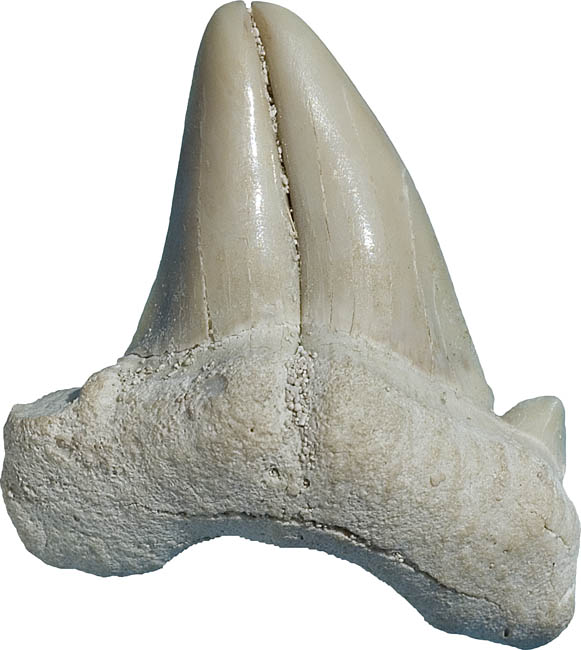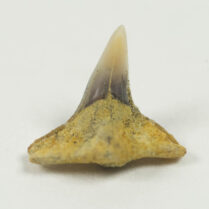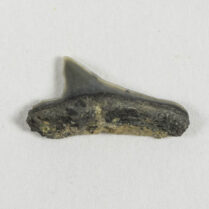Description
Late Paleocene
Ouled Abdoun Basin, phosphate deposits, Morocco
1.1 inch tooth.
Shark, Otodontidae.
Deformed (or pathologic) shark teeth are found in the fossil record just as they are today. They can be caused by genetic mutation. disease, or injury. With this tooth it appears there was an irregular genetic expression that resulted in two main cusps developing instead of just one.
Otodus was a shark that appeared a few million years after the K/T extinction. By the beginning of the Eocene, it was the largest shark on earth. It would survive through the Oligocene and into the Miocene with gradual changes in its teeth to the extent that its name would change multiple times after multiple reinterpretations. Otodus is now considered the ancestor of Carcharocles megalodon, and if fact, many paleontologists have stated that the species megalodon should be reassigned to the genus Otodus because it is basically the same shark slowly changing through time.





